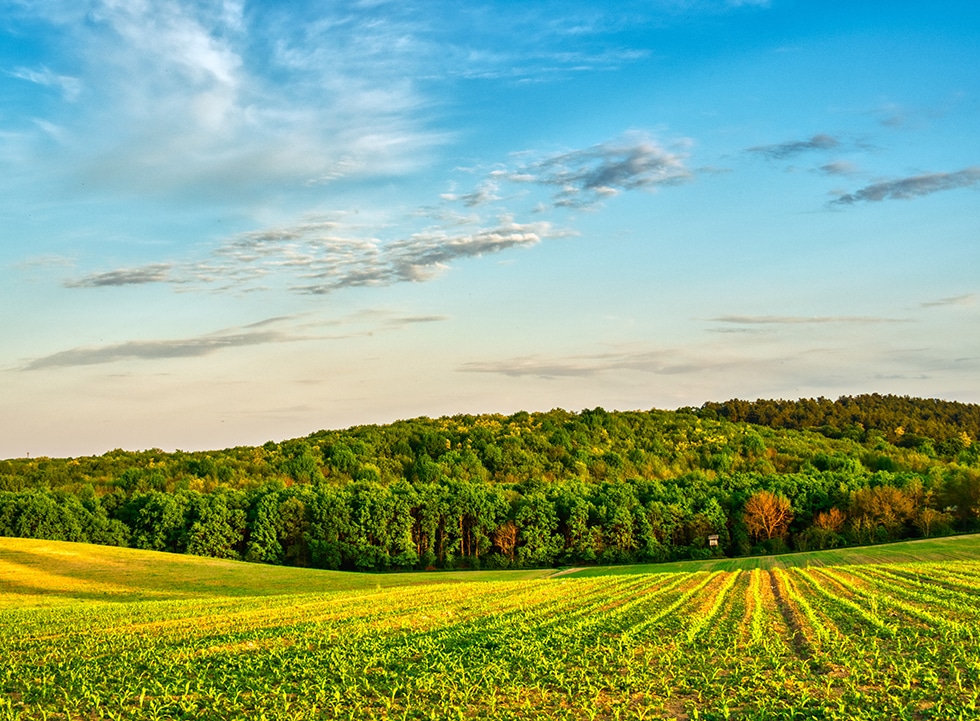This year, Earth Overshoot Day falls on August 2nd. That’s the consequence of humanity demanding 70% more than Earth’s ecosystems are able to regenerate. Food makes up a large part of our Ecological Footprint – feeding humanity currently takes just about 50% of Earth’s biocapacity. Food is essential. With a growing human population, and increasing demand for healthy food, the ecological pressure of food will mount, while the capacity for producing food is increasingly challenged due to greater resource stress and climate uncertainty. It is not clear yet how the needed food can be provided under these trends.
In a recent Nature publication, our partners at Wageningen University & Research (WUR) examined the opportunities for countries in Europe to provide food while reducing the ecological impact of their food systems. Using a biophysical optimization model, they assessed several food systems scenarios the EU could pursue that could minimizing ecological impact while still making all the needed food available. They found that redesigning the food system with circularity principles has the potential to reduce land use for food by up to 71% and cut greenhouse gas emissions by 29% per person. These transformations, if applied across the EU, could achieve a self-sufficient and healthy food system.
Some of the key principles applied in the food systems scenarios include:
- Minimizing and avoiding waste in the food system by recycling them into inputs such as fertilizer or animal feed.
- Minimizing and avoiding food-feed competition, i.e., using cropland to produce food for direct human consumption instead of producing feed.
- Optimizing crop production by matching crop types to climate soil zones.
Initial estimates by Global Footprint Network suggest that under an ideal and optimized agricultural system1 in the EU2, the per person Footprint of the EU could be reduced by 24%, while increasing the biocapacity by 12%. The magnitude of such an EU food transformation is large enough that it would push back the EU Overshoot Day by 34 days. This transformation of the European food system alone would move Earth Overshoot Day by 9 days in the good direction.
Our initial calculation only took into consideration high-level aspects of the optimized agricultural system, including increased agricultural yields, reductions in land use, and changes in total food consumption, and reductions in greenhouse gas emissions. Additional food systems scenarios examined by van Zanten et al. introduced aspects such as a transition to environmentally friendly, healthier diets3, and maximizing the ability of the EU to feed even larger populations in the future.
Results shown here assessed a single scenario for the EU. In future collaborations with WUR and FIBL, we aim to improve the resolution of our initial estimates, assess the effect of multiple food systems scenarios, and envision the potential of a global food systems transformation to reduce overshoot.
Without such reductions, the impacts of persistent overshoot will continue to amplify the symptoms we are already experiencing, including the extreme, record-breaking weather events in 2023. For instance, the recent and unprecedented ocean temperatures and heat waves suggest that overshoot may be manifesting in a tipping point, and which prominent scientists suggest there is no “new normal”. They have also heightened our awareness that we live in a finite, interconnected world. Our streamlined resource distribution system has delivered ever more. However, its dependence on constant depletion, politically unstable regions, and complex international markets have also amplified the volatility and fragility of our resource situation.
The underlying resource dynamics for countries is quite straightforward. As shown in research led by Global Footprint Network, 72% of the world population live in countries faced with a double resource challenge. These countries (1) run a biological resource deficit (where demand for biological resources exceeds regeneration), and (2) generate less than world-average income, limiting their ability to purchase extra resources from global markets. Without a meaningful food transformation, it is hard to imagine how lasting progress towards eradicating poverty can be achieved. WUR’s research shows that significant improvements are possible, even with existing technology.
1 The calculation was based on the CirAgri scenario found in van Zanten et al. (2023), which optimized the agricultural system following circular principles to meet existing EU protein supply and minimize land use in a food-self-sufficient EU.
2 The baseline countries and year for the scenario analysis is the EU-28 in 2010.
3 https://www.thelancet.com/journals/lancet/article/PIIS0140-6736(18)31788-4/
Acknowledgement: This research has been generously supported by AVINA STIFTUNG. We also want to thank our colleagues at Wageningen University & Research (WUR) for their collaboration.



